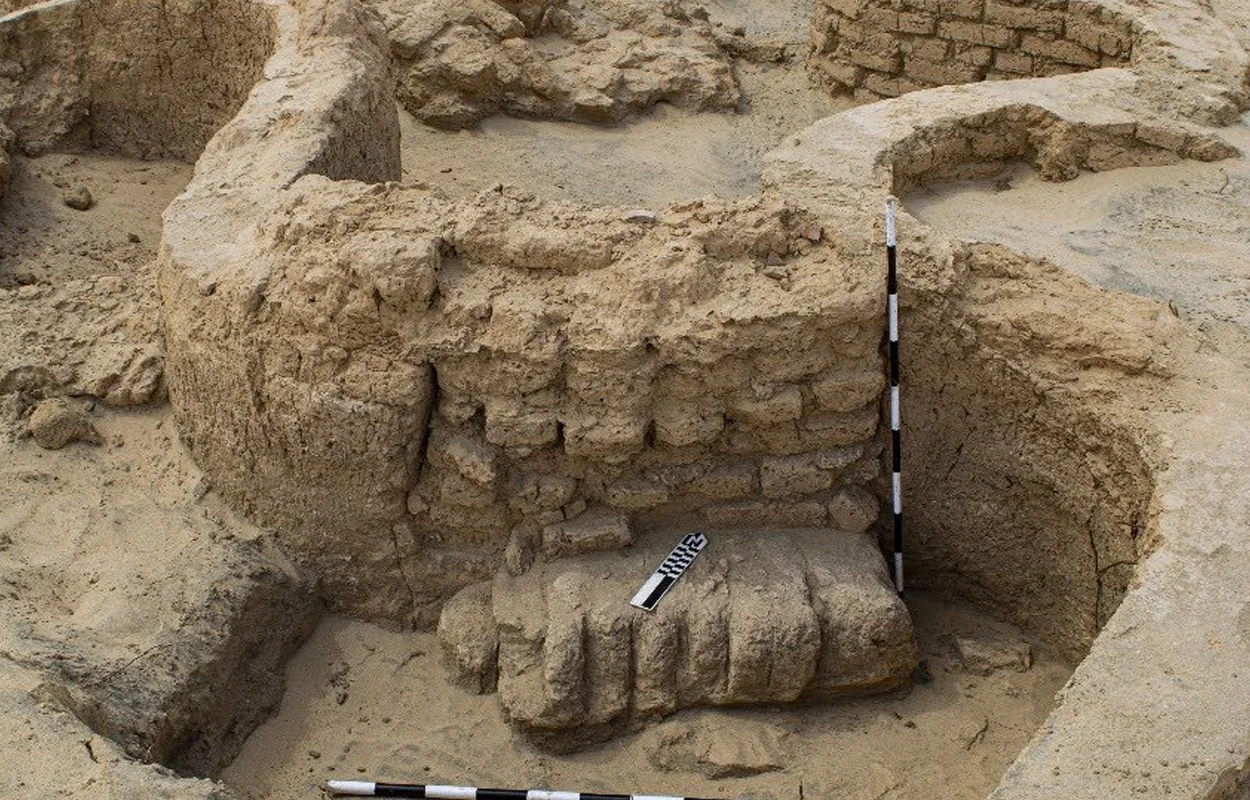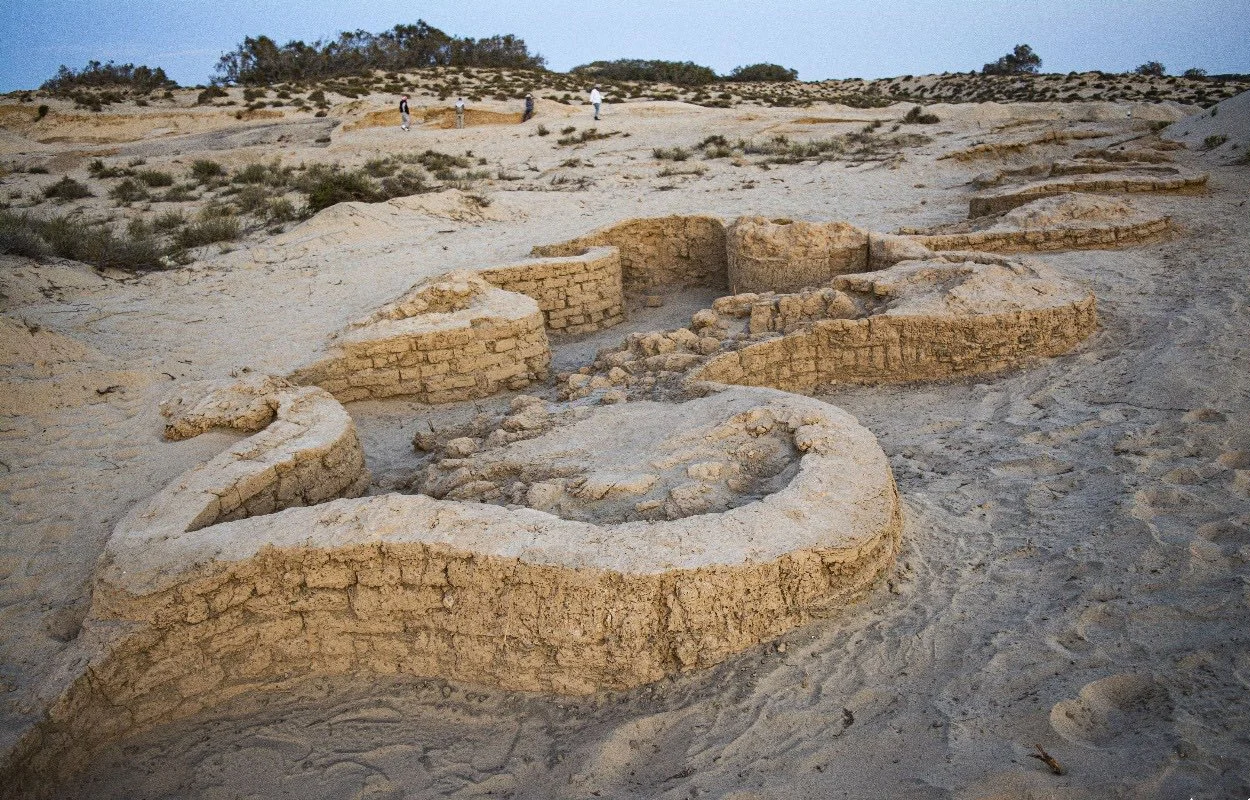Archaeologists have announced the discovery of an ancient fortress from Egypt’s New Kingdom period at Tell El-Kharouba in the Sheikh Zuweid region of North Sinai.
According to experts, the fortress was strategically located along the “Way of Horus” –an ancient trade route linking Egypt with the northern empires of Syria, Anatolia and Mesopotamia.
The fortress sits near the border with the present-day Gaza Strip, which in ancient times served as a vital defence of Egypt’s eastern borders.
Excavations have revealed a southern wall approximately 105 metres long and 2.5 metres wide, complete with a fortified gateway and eleven defensive towers. Also uncovered are sections of the northwestern and western walls which had been concealed beneath shifting sand dunes.

Within the interior is a quarter believed to have served as a barracks for the garrisoned soldiers where archaeologists found pottery fragments, a foundation deposit from the early 18th Dynasty, and a stamped vessel bearing the cartouche of King Thutmose I.
Other discoveries included imported volcanic stones from the Greek islands, a large bread oven, and remnants of petrified dough, offering insight into the daily lives of the garrison.
Dr. Hisham Hussein, explained that preliminary studies indicate the fortress underwent multiple phases of restoration and structural modification over the centuries. The southern entrance was redesigned several times, reflecting evolving architectural and defensive needs.
Archaeologists plan to continue excavating the remaining walls and investigate an adjacent military port, believed to have served as a critical maritime outpost supporting the fortress.
Header Image Credit : Ministry of Tourism and Antiquities
Sources : Ministry of Tourism and Antiquities





